THE BEST ALL ROAD WHEELS

What if you could ride one set of “all road” wheels that perform as well as the best road and gravel wheels?
Before I answer that question, let me put it into context.
Many roadies also ride gravel, cyclocross, or mountain bikes.
That’s nothing new though anecdotally, the number of us who’ve added gravel bikes to our collection seems to have grown over the last few years.
What is new, or at least newer, is that more brands are selling “all road” bikes designed to perform at the same high level on paved, dirt, and light gravel roads as those made only for paved or dirt and gravel surfaces.
These are not hybrid or Swiss Army knife-type bikes full of compromises. Instead, they share the geometries, tube shapes, and layup properties of endurance road bikes, the clearance for wider tires found on gravel bikes, and the drivetrains and gear range found on either.
The definition of an all road bike varies from brand to brand, and some market them more as gravel race bikes. But makers of the BMC Roadmachine, Cervello Aspero, ENVE Fray, Giant Defy, Parley Ouray, Ridley Grifn, Specialized Crux, Trek Domane, and Wilier Rave each claim all road status.
What about all road wheels?
The best-performing road wheels have historically been divided into three categories – light climbing wheels, deep aero wheels, and mid-depth all-around wheels that perform well in a range of road riding situations and racing disciplines.
And now gravel wheels have been another distinct category.
So those of us enthusiasts who ride road and gravel bikes will typically have at least two wheelsets – all-around road wheels and gravel wheels. If we live in a part of the world that’s very mountainous or mostly flat or travel to places to race or ride where that kind of terrain predominates, we might also have a climbing or aero wheelset.
Some of us trying to avoid the extra cost of buying a good gravel wheelset to replace the underwhelming one that usually comes on a new gravel bike might put wider, knobbier gravel tires on a good road wheelset.
And those of us who now have a gravel bike and want to avoid the cost of a new road bike may put road tires on our gravel bike wheels.
Each approach certainly works, but not if you want the best performance on each surface.
So let me come back to the question I posed at the beginning of this review:
What if you could ride one set of “all road” wheels that performed as well as the best road and gravel wheels?
ENVE introduced the SES 4.5 AR, the first high-performance all road wheels, in 2016. The SES 3.4 AR came a few years later. Others, notably Mavic have promoted some of their wheels as suitable for all road riding but their performance was not at the level of the best road or gravel wheels.
Today, there are a growing number of true all road wheels that perform as well or better as all-arounders, road climbers, and gravel wheels.
After riding many of them, I find the best are suited to one of two types of surface and terrain combinations.
What I’ll call “Type I all road wheels” excel as road all-arounders and on fast dirt and light gravel surfaces. Their aero performance makes them noticeably faster than the second group or “Type II all road wheels” if you are riding at speeds above 20 mph/32 kph on both.
Type I all road wheels tend to be deeper and slightly heavier than Type IIs though the best certainly climb well, just not as well as the best Type II all road wheels.
Type II’s sweet spot is on mountain paved road climbs and the kind of gradients you’ll typically find on gravel rides, including many rockier Class III and technical Class IV sections. They will also perform as a road all-arounder and on dirt and light gravel sections if you don’t ride at speeds where aero differences matter.
Related
How To Choose The Right Wheels For You
The Best Carbon Road Bike Wheels
The Best Lightweight Wheels for Climbing
Type I All Road Wheels
Among the Type I all road wheels we’ve tested, I’d recommend one as the best performer.
ENVE 4.5
The ENVE SES 4.5 shines on many road and gravel performance criteria and, at US$2850/£2850, costs a good deal less than buying a top-performing set of road wheels and a second set of gravel ones.
Its depth and outside width, paired with the right tires, make it one of the most aero road, crit, or light dirt and gravel racing wheels you can own. It feels as fast or faster on flat, rolling, and descending terrain, as comfortable on good roads, and more comfortable on rough roads and unpaved paths as any road or gravel wheelset we’ve tested.
While ENVE dropped the AR name when it updated the wheelset in 2022, it’s still the original all road wheelset, just a touch lighter (1518 grams measured) and wider (32mm external, 25mm internal) than its predecessor. Other brands have copied its different front and rear rim shapes and depth (52mm/57mm), but none have matched its combination of aero performance, stiffness, crosswind stability, and compliance, making it the standard for all road wheels.
You can order it using these links to recommended stores Competitive Cyclist, BTD (BikeTiresDirect), Merlin, and Sigma Sports.
See my full review and ratings of the ENVE SES 4.5.
In The Know Cycling is ad-free, subscription-free, and reader-supported. If you want to help keep it rolling without any added cost to you, buy your gear and kit after clicking the store links on the site. When you do, we may earn an affiliate commission that will help me cover the expenses to create and publish our independent, comprehensive and comparative reviews. Thank you, Steve. Learn more.
Type II All Road Wheels
Here are my Type II all road wheelset recommendations among those we’ve tested. As mentioned earlier, these are for riders who want an all road wheelset to serve as their primary climbing road wheels, fill our all-around needs if we don’t ride or race at aero speeds, and ride the full range of gravel surfaces.
ZIPP 353 NSW
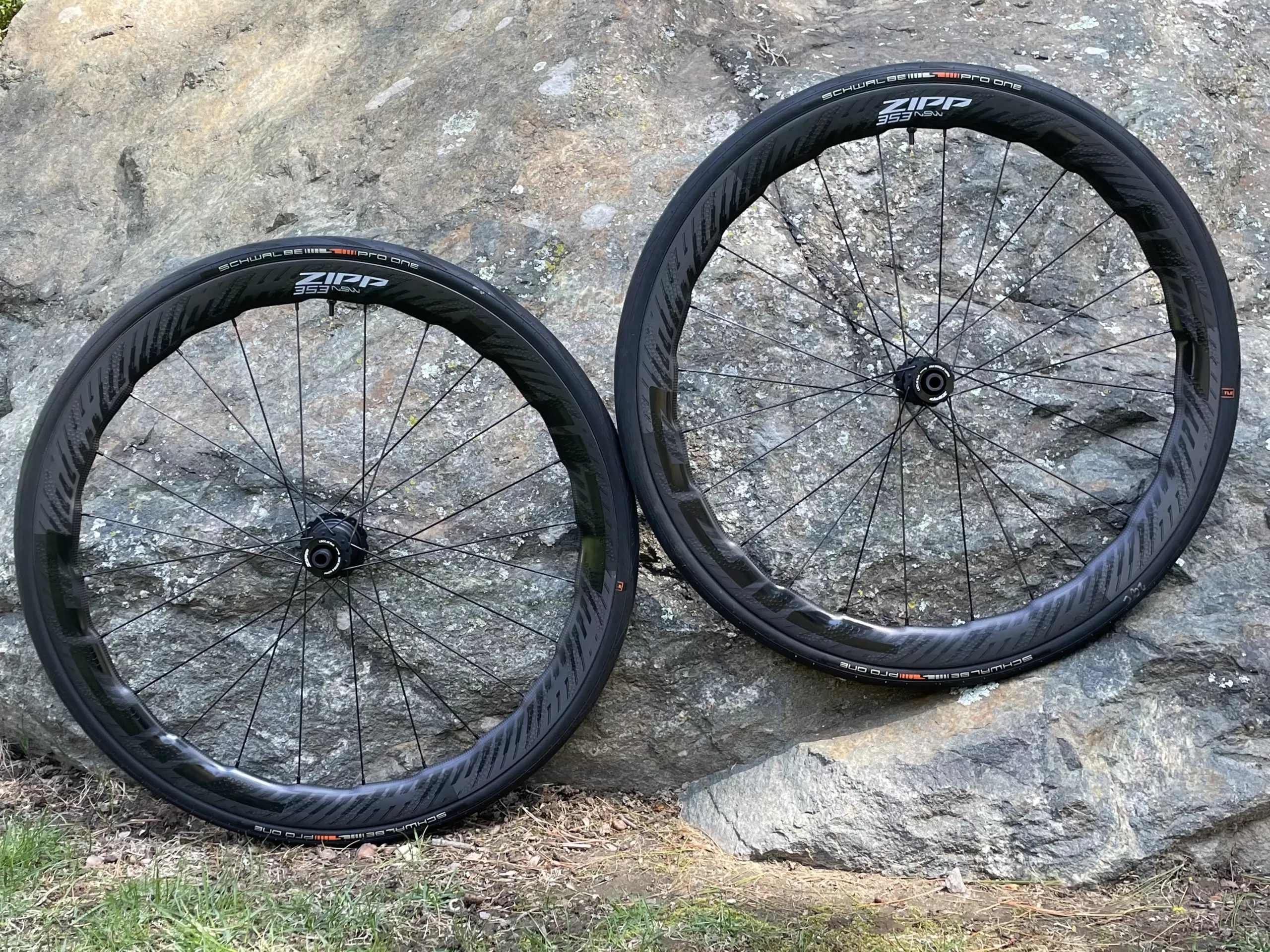 Despite a depth that suggests it is an all-around wheelset, the Zipp 353 NSW wheelset doesn’t carry the momentum that the best all-around wheels do and climbs and descends nearly as well as the best, dedicated climbing wheels. It also performs well on everything from smooth paved roads to rough gravel ones.
Despite a depth that suggests it is an all-around wheelset, the Zipp 353 NSW wheelset doesn’t carry the momentum that the best all-around wheels do and climbs and descends nearly as well as the best, dedicated climbing wheels. It also performs well on everything from smooth paved roads to rough gravel ones.
As a B-group road rider (i.e. 18-20mph/30-32kph average speed on rolling terrain rides) and regular gravel rider on everything from well-maintained dirt to gnarly, rooty, rocky, technical Class IV sections, this is my go-to all road wheelset. While I’m always testing a range of road, gravel, and all road wheels, the 353 NSW is the one I’ll set up when the ride call includes some long, 7%+ road climbs or I’m going to a gravel event I’ve been targeting.
At 1248 to 1268 grams, depending on the hubset you specify, the 353 NSW is almost freakishly light for a non-tubular wheelset of its depth and width. It’s 150 to 200 grams lighter than most of the current generation of tubeless disc carbon wheelsets and only about 100 grams heavier than the lightest, pure climbing ones.
It’s stiff, handles extremely well, and is supremely comfortable.
The Zipp 353 NSW is also one of the most expensive wheelsets you can buy at US$4220/£3376/€3798. So there’s that. If you’ve got the coin to join, you can order them at Competitive Cyclist, BTD (BikeTiresDirect), Merlin, Sigma Sports, and BikeInn.
See my full review and ratings of the Zipp 353 NSW.
ENVE SES 3.4 DISC
The ENVE SES 3.4 doesn’t fit neatly into a traditional wheelset category. Instead, it has defined the all-road one.
While around 40mm deep (39.5mm front, 43.5mm rear with my calipers), it’s not as fast as the best all-around road disc wheels that are often 10mm deeper. And despite being quite light (1432 grams on my scale with ENVE alloy HG hubs), the 3.4 is also not a dedicated climbing wheelset.
Like gravel wheels, the 3.4 is wide – 25mm internal (25.0 measured) and 32mm external rim widths (actually 32.1mm front and 32.5mm rear).
Specs often create expectations of how a wheelset will perform. Riding it, as we’ve done extensively with the 3.4 has shown that its stiffness makes it feel very light going uphill and highly responsive to acceleration efforts on every surface. It’s also the most comfortable wheelset I’ve ever ridden, regardless of the tires or surface I’m on.
The SES 3.4’s handling is also supreme – stiffness, responsiveness, and comfort undoubtedly contribute to that. Together, these performance attributes give you supreme confidence cornering at speed on unevenly paved roads and when changing lines with the right gravel tires mounted. Downhills on paved roads are a pure joyride.
On unshielded open roads and descending exposed alpine ones, even the 10-20mph crosswinds we experienced during some testing rides didn’t affect this wheelset one bit.
The SES 3.4, updated in 2022 only by dropping the AR suffix in its name and the sticker on its rims, will run you US$2850, £3300, €4000. You can order it through these links to recommended stores Competitive Cyclist, BTD (BikeTiresDirect), Merlin, and Sigma Sports.
See my full review and ratings of the ENVE SES 3.4.
ROVAL TERRA CLX II
The Roval Terra CLX II hits the jackpot for road and gravel cyclists. This one wheelset excels across a broader range of terrain and surfaces than most other high-performance all-road wheels we’ve tested and does so at a better price.
My fellow tester Miles calls the Roval Terra CLX II “quiver killers” after doing a range of road, gravel, and cyclocross rides and races on them. I used them to “cat up” and keep up on lumpy group road rides and challenging gravel ones.
By definition, all-road wheels perform well both on and off road. They don’t have weaknesses on either surface. But while some are good at a lot of things and even better at others, the Roval Terra CLX II wheelset is better at most things.
For example, the Terra CLX II excels on New England gravel rides where there is typically 1000 feet of climbing every 10 miles. It flies uphill on 38-40mm range tires, handles well through the loose corners, and is stout on Class IV technical sections.
After training with these Rovals on gravel for a week, Miles chose them for the unforgiving Vermont Overland race. The Overland includes seriously rocky and unmaintained logging roads where you need to pick your lines carefully while still going fast (it’s a race!). Light on the climbs, tough in the rough stuff, and confidence-inspiring through the corners, the Terra CLX was the right choice.
Being both stiff and lightweight (1278 grams with HG freehub), they also go uphill as well as any dedicated road climbing wheelset we’ve tested. Miles set some climbing PRs with these wheels while I kept up with my buds on climbs where I typically get dropped.
Yet, despite their weight and relatively low profile (33.0mm measured), they are also great all-around road and racing wheels. With 28mm Continental Grand Prix 5000 S TR tires inflated in the low 50psi range (25.3mm internal width, 68kg rider weight), you’ve got a race-ready setup.
The Terra CLX II wheels’ ability to maintain speed on fast courses surprised us. While you would want deeper wheels for a flat time trial, these Rovals handle better than most of any depth when cornering, on descents, and over rolling terrain. They snap up to speed in sprints, and you can drive them through corners.
Stable in sidewinds, the Terra CLX II is also very compliant. That might be surprising for a wheelset as responsive when accelerating and cornering as these. But given the ample internal rim width, there’s plenty of opportunity to create a comfortable combination with the right tires and inflation pressure.
Miles paired the Roval Terra CLX II with 40mm Schwalbe G-One RS (review coming) at 20 psi front, 23 psi rear inflation pressure. They tracked well over the Vermont Overland’s wet, rocky surface this year, providing enough give through the wheels, bike, and hands that he still felt safe through the tough, MTB-type descents and his body wasn’t wrecked after the race.
I rode 28mm Vittoria Corsa Pro TLRs at 60psi on the Terra CLX II for a ride filled with climbs and rollers on cracked, mostly worn pavement that felt supremely comfortable at my touch points. If only my legs and lungs felt half as good!
Roval uses the DT Swiss 180 ratchet EXP internals with ceramic bearings in their CLX II hubs, ones I find roll smoother and quieter when easily and regularly cleaned and greased than DT Swiss’s 240 internals.
If you love to mix it up and ride aggressively, fast, and comfortably on a range of road, gravel, and cyclocross terrain and surfaces, the Roval Terra CLX II with the right tires is an all-road winner.
Note that it’s the Roval Terra CLX II I’ve reviewed here. The first generation Terra CLX (heavier and no longer made), Terra CL (different hub and spokes, heavier), Terra C (different rim, hub, and spokes, considerably heavier), and Terra CLX EVO (dedicated gravel wheels) while less expensive, perform differently enough not to be considered in the same all-road performance discussion with the Terra CLX II.
And at its US$2500, £2500, or €2850 retail price, while not cheap, the Roval Terra CLX II is still less than its all-road competition in most currencies. You can order it while supporting the site’s ability to provide more independent reviews like this one at no additional cost to you when you buy it through these links to Competitive Cyclist, Performance Bike, and BikeInn.
For added photos and video, see my individual review of the Roval Terra CLX II.
BONTRAGER AEOLUS RSL 37V
While not the first, the Bontrager Aeolus RSL 37V is one of the best wheelsets you can ride for both paved and unpaved or all road cycling.
The differences to the ENVE 3.4 are subtle but important, especially if you prefer the performance characteristics that the Aeolus RSL 37V successfully delivers.
As laterally stiff as any of the all road or gravel wheelsets we’ve tested, the Aeolus RSL 37V’s stiffness feels more balanced than most. While it lacks the initial snap you get from the lay-up or bracing angles or whatever secret sauce is used in a wheelset like the ENVE 3.4, these Bontragers provide consistent strength, precise handling, and go-for-it confidence riding switchbacks down an alpine road, railing a turn on gravel, or accelerating out of corners to overtake a fellow cross rider.
The Aeolus RSL 37V’s robust lateral stiffness is joined by better vertical compliance than most, a combination you don’t often find in a wheelset. Over the course of a 75-mile gravel ride or a day of climbing 10,000 feet in the mountains, both of which I did on these wheels, I thanked them for helping to reduce the pain of those efforts.
The Aeolus RSL 37V wheels weigh 1421 grams with rim tape and tubeless valves. The rims measured 25.2 mm inside width, 31.5mm outside width, and 37.1mm deep. In addition to smooth rolling DT 240 EXP hubs, each wheel uses 24 DT Aerolite spokes bladed, straight-pull spokes. Unlike the ENVE and Zipp wheels, these Bontrager wheels are hooked so you can ride them with tubed road clincher tires if you prefer.
Priced at US$2700, £2200, €2600, they are a tad less expensive than their ENVE competitors, especially outside the US. You can order them from Bontrager.
See my full review and ratings of the Bontrager Aeolus RSL 37V.
Note: Bontrager also makes the Aeolus Pro 3V (click to see my review) a lower-priced, similarly dimensioned wheelset but with a lesser hub and carbon layup that weighs in near 1600 grams. While well suited for flatter dirt and gravel terrain, it’s quite average on paved roads. The Aeolus RSL 37 and Aeolus Pro 37 wheelsets – no V in the names are best for paved road climbing but not well suited for dirt or gravel riding.
ZIPP 303 FIRECREST
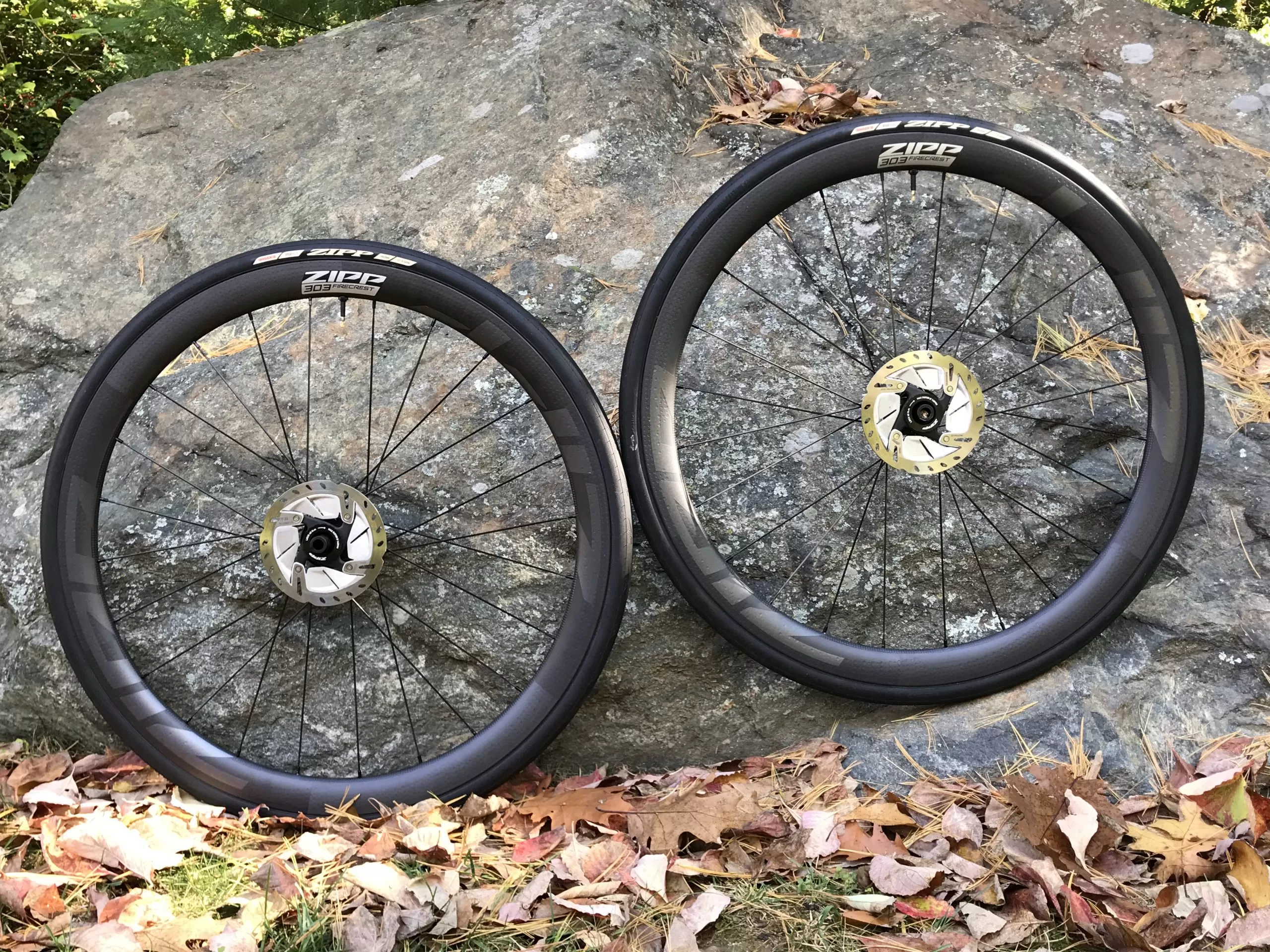 Nearly equal to the performance of the climbing wheels from ENVE and Bontrager, the Zipp 303 Firecrest at US$2046, £1780, €1994 is a relative value for paved road climbing and gravel road riding.
Nearly equal to the performance of the climbing wheels from ENVE and Bontrager, the Zipp 303 Firecrest at US$2046, £1780, €1994 is a relative value for paved road climbing and gravel road riding.
Shallower (40mm), wider (25mm internal, 30mm external), and lighter (1383 grams) than the prior 303 Firecrest Disc model, it is more climbing oriented than any of the long line of all-around rim or disc brake Firecrests that Zipp built its brand around.
While also stiffer than earlier Firecrests, it’s not quite as responsive, comfortable, or fast as the other Type II all road alternatives either on climbs, paved flats, or gravel. But, this Zipp offers a price the others don’t come close to for the level of performance you get.
You can order it through these links to recommended stores Competitive Cyclist, BTD (BikeTiresDirect), Merlin, Sigma Sports, and BikeInn.
See my full review of the Zipp 303 Firecrest.
RESERVE 40|44
There’s not much that the Reserve 40|44 wheelset doesn’t do well for the cycling enthusiast who wants one wheelset for road and gravel riding.
It gives you a comfortable, smooth rolling, and quiet ride. The compliance my fellow tester Miles and I felt on paved and unpaved surfaces with a range of 28mm and 40mm Conti, Michelin, and Schwalbe tubeless tires was likely due, in part, from some of the widest all-road rims I’ve measured – 33.5mm external, 26.0mm internal on the front wheel, 31.5mm and 25.6mm in the rear – on the Reserve 40|44 wheels.
While both of us are light and prefer tubeless setups with sealant inside, the Reserve 40|44’s hooked rims and strength testing allow you to use tubes inside clincher or tubeless tires and inflate far beyond what most riders of modern wheels and tires would want to ride comfortably. There are also no weight limits for heavier riders to be concerned about.
Our test set came with DT Swiss 240 Ratchet EXP hubs, though you can also order the 40|44 with DT 180 or DT 350 models. While not always the case in our experience on other wheels, the DT 240s on the Reserves were absolutely silent. I always find a quiet freehub a bonus when combined with a comfortable wheelset.
The Reserve 40|44 also climbs well, is stable in sidewinds, tracks wells in corners, and is responsive to line changes on gravel and accelerations on the road.
But against the field of all-road wheels, a highly competitive one to be sure, other wheelsets do many of these things better.
Even with its “40” front wheel (my calipers actually measured it at 41.5mm deep), its aero performance was good but not great. Miles raced these Reserves in a fast, technical criterium and was not overly impressed with their straight-line speed or lateral stiffness during sprints.
For someone like me, pushing average watts and sprinting only when I need to go to the bathroom, I enjoyed the Reserve 40|44’s speed and found them stiff enough but wasn’t wowed by them on days when the workout plan called for threshold or long VO2 intervals.
All-road wheels, including the slightly more expensive Roval Terra CLX II, still more expensive ENVE SES 3.4, and way expensive Zipp 353 NSW ride faster and are more responsive than the Reserve on paved, dirt, and gravel roads.
And while I respect your unique aesthetic tastes, I’ve got to say the Reserve 40|44 look rather blah. Their matt black finish with small, simple logo and model name labels make them look underwhelming and not nearly as proud of what’s rolling with those labels as they should be.
Perhaps the look is consistent with the meaning behind the Reserve brand.
Regardless, these are solid all-road wheels. But the US$2200 price for the DT 240 model makes me want to stretch a bit for the added performance I get with the US$2500 Roval Terra CLX II or even more for the ENVE SES 3.4.
Instead, I see the DT 240 equipped Reserve 40|44 as good competition for those who want hooked rims and a bit more comfort than the slightly less expensive Zipp 303 Firecrest.
You can order the Reserve 40|44 while supporting the site’s ability to provide more ad-free and subscription-free reviews like this one at no additional cost to you when you buy it through these links to Competitive Cyclist, BTD (BikeTiresDirect), BikeInn, and Sigma Sports.
For added photos and video, see my individual review of the Reserve 40|44.
CADEX AR 35
 When a wheelset carries the all-road moniker like the CADEX AR 35, it suggests you’ll get a go anywhere, do anything vibe when riding it.
When a wheelset carries the all-road moniker like the CADEX AR 35, it suggests you’ll get a go anywhere, do anything vibe when riding it.
And while few all-road wheels actually give you that feeling, riding them on a wide range of surfaces in many situations can tell you where they work best.
For this review, I asked two of my most accomplished multi-discipline fellow testers to tell us what the CADEX AR 35 is all about.
Aiyana, a 120lb/54kg competitive road and mountain biker felt boosted riding the AR 35 on typically worn and uneven New England paved roads. They took her where she wanted, corned at speed, and rode through old chipseal, light gravel sections, and wet surfaces with the same confidence as freshly paved blacktop.
On well paved roads, however, they don’t stand out. While they roll and maintain their speed well for a relatively shallow (35.1mm) carbon wheelset, they don’t climb or accelerate any better than the average all-road wheelset. Perhaps that’s not surprising, given their 1449g measured weight (vs. 1270g claimed), even with carbon spokes and hookless rims.
The CADEX AR 35 cornered for Aiyana exceptionally well, making her want to rejoin the crit racing circuit. Even though they can’t deliver that “jump and go” breakaway sensation she’d need to win the crit, the wheels helped her follow the slow/fast/slow/fast speed changes that would allow her to set up her sprinting teammates.
Stiffness, likely due to its carbon spokes, is a defining characteristic of the CADEX AR 35 and key to its cornering performance.
But how does that stiffness play off-road?
Miles, who races road, gravel, cyclocross, and MTB at the highest amateur age group levels, drew the off-road testing assignment. After riding the AR 35 on paved roads for a couple of days, he worked them over on gravel and in CX races for several months.
The AR 35 performed best for him on hardpack surfaces like dirt and gravel roads. There, they rolled fast and were highly predictable. They held their momentum well above 20mph/32kph (yes, Miles rolls that fast on dirt and gravel roads) and didn’t catch sidewinds to a point where they affected ride stability.
And the AR 35’s stiffness, as rigid as any gravel wheelset he’s ridden,didn’t flex at all in corners and rewarded Miles’ sprinting and other hard efforts on gravel and cyclocross tracks.
However, when the ride gets rowdy, as on trails, rougher gravel, and technical terrain, including short drops, steep uphills, and rocky descents, he felt the AR 35’s stiffness right through the frame and into his arms. Bunny hopping over fallen branches or small rocks with these CADEX all-road wheels came with less spring and landed harsher than most wheelsets he’s ridden, even with 33mm cross tires inflated at 20 psi for his 150 lb body.
Miles had to overhaul the front hubset bearings after a particularly muddy CX race and Aiyana rated the rear hub noise on the louder end of the spectrum. But after a lot of hard riding, the rims, spokes, and hubs remained intact.
Cadex puts carbon spokes and ceramic bearings in all of its top-end wheels. Those choices on the CADEX AR 35 wheels make for highly desirable speed, cornering, and smooth-rolling on rough paved and packed dirt and gravel roads. But on rougher and more technically challenging surfaces, they are less at home.
If you ride road and gravel surfaces that suit the AR 35’s surface sweet spots, they’d give you solid performance and serious bling.
Priced at US$3000, £2500, €2400, you can order them from Mike’s Bikes for delivery in the US and Canada, and at Cyclestore for UK and European delivery.
Find what you're looking for at In The Know Cycling's Know's Shop
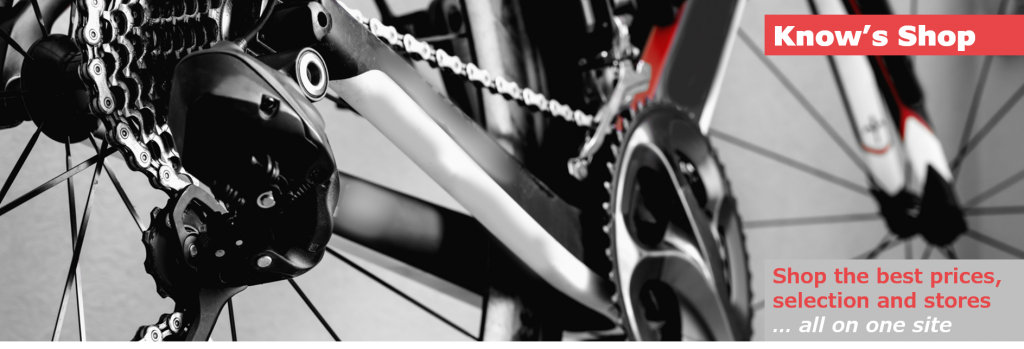
Are All Road Wheels For You?
Would you switch the tires on an all road wheelset depending on the surface you’ll be riding? Especially with the best road and gravel tires now being tubeless ones that you’d want to ride with sealant instead of a tube, at least on gravel?
Or do you prefer to own (and can afford) several wheelsets dedicated to paved and gravel road surfaces and terrains, already set up with tires that you don’t need to change?
That’s for you to decide. I know some aren’t comfortable setting up tubeless tires, don’t want the hassle even if you are, or can’t find the time in your busy week especially if you frequently switch between road and gravel riding.
But I’ve found from testing the wheels I reviewed above that the best all road wheels are some of the best performers for most road and gravel riding.
It comes down to trading off performance, expense, and time. Either you buy:
a) one set of the best-performing wheels and switch between road and gravel tires for the kind of surface you’re riding next – you get a combination of the best performance, least expense, and most time spent setting them up.
b) two sets of the same or slightly different best performers with a pair of road tires on one and gravel tires on the other – best performance, greatest expense, and least time spent.
c) one set of the best and another set that’s less than best and put a pair of road tires on one and gravel tires on the other – less than best performance, between least and most expense, and least time spent.
It only took me about a half dozen times to set up tubeless tires with sealant to get pretty good at it. Depending on the wheels and tires, I’ll spend no more than 5 minutes longer installing tubeless tires and sealant than a clincher tire with a tube. I recycle the sealant and use an inexpensive compressor to save money and time.
If I wasn’t testing road and gravel wheels and tires most of the time, I’d go with an all road wheelset for most of my road and gravel riding (option a), add a less expensive wheelset for whichever terrain I rode less (option c). I’d then switch to my better-performing all road wheelset with the right tires for my most important rides or events.
No doubt, it’s a personal choice driven by your own performance, expense, and time considerations.
But, for those of you moving to an all road bike or who want your next wheelset to be versatile enough to ride on either your road or gravel bike, you now have a lot of good options in a single, all road wheelset.
* * * * *
Thank you for reading. Please let me know what you think of anything I’ve written, or ask any questions you might have in the comment section below.
If you’ve enjoyed or benefited from this review and want to keep new ones coming, buy your gear and kit after clicking the store links in this review and others across the site. When you do, we may earn an affiliate commission that will help me cover the expenses to create and publish more ad-free, subscription-free, and reader-supported reviews that are independent, comprehensive, and comparative.
If you prefer to buy at other stores, you can still support the site by contributing here or buying anything through these links to eBay and Amazon.
You can use the popup form or the one at the bottom of the sidebar to get notified when new posts come out. To see what gear and kit we’re testing or have just reviewed, follow us by clicking the icons below.
Thanks, and enjoy your rides safely! Cheers, Steve
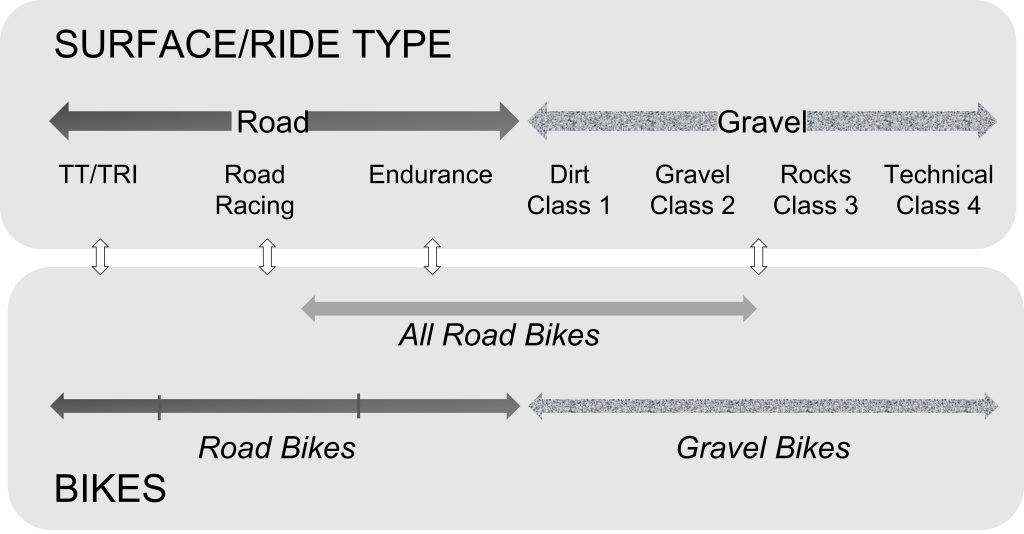
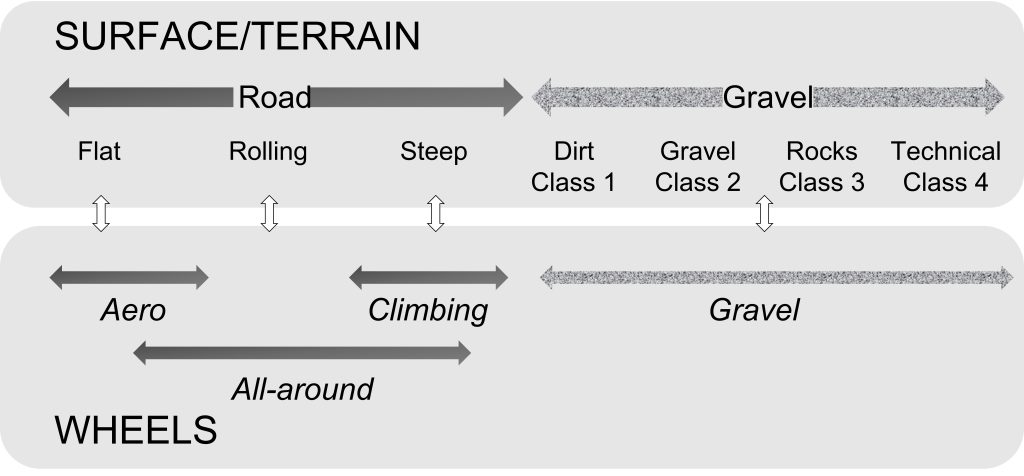
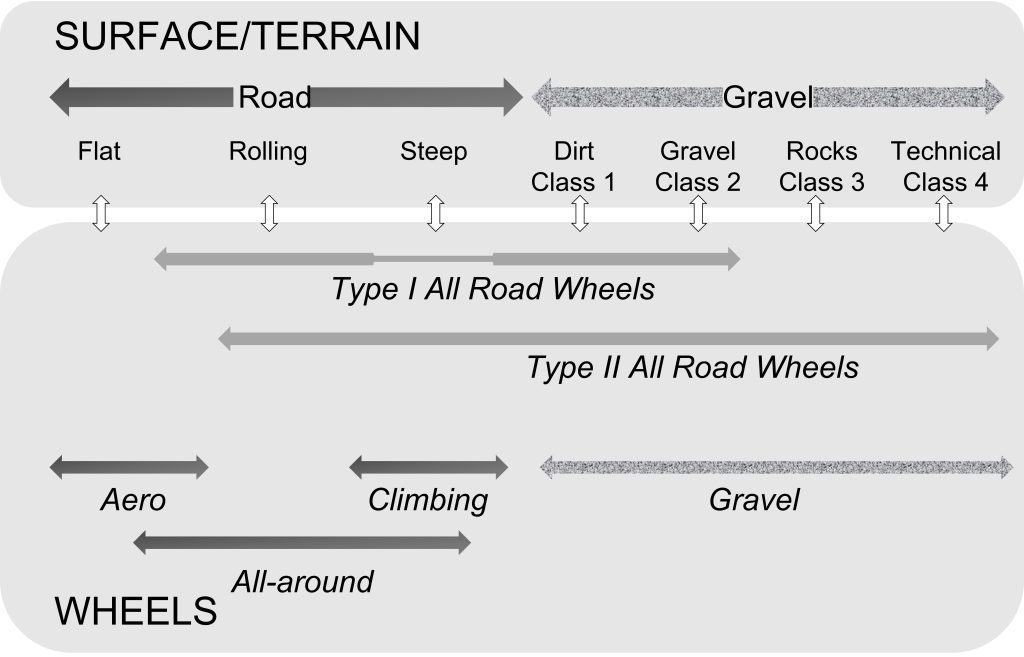
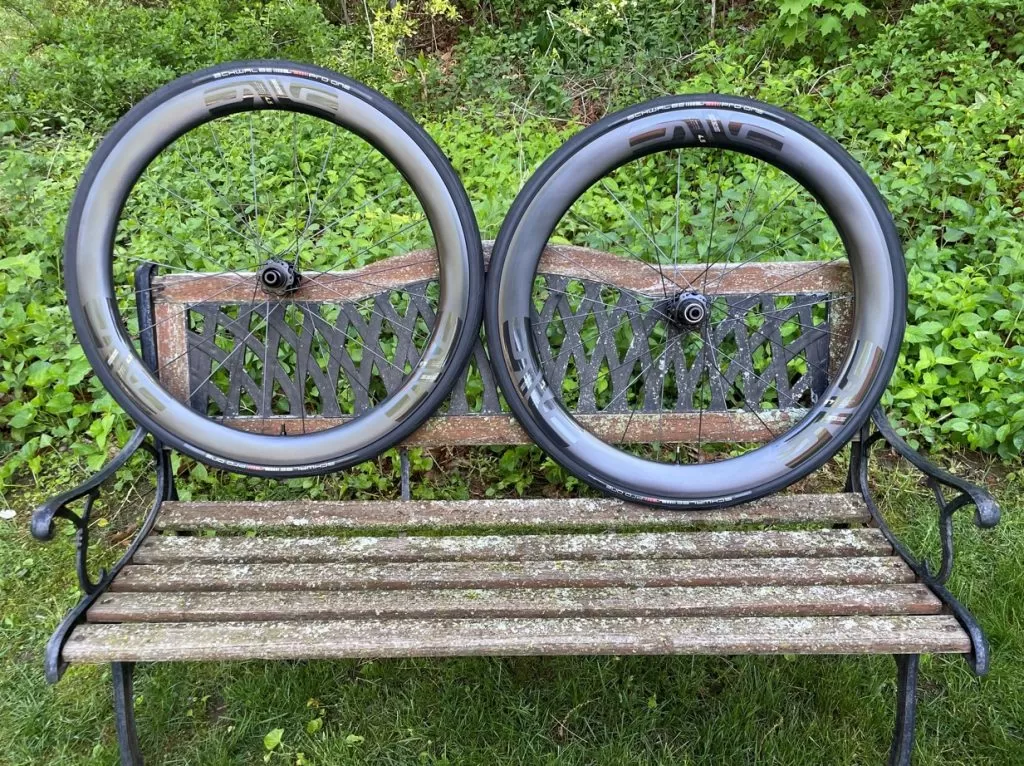

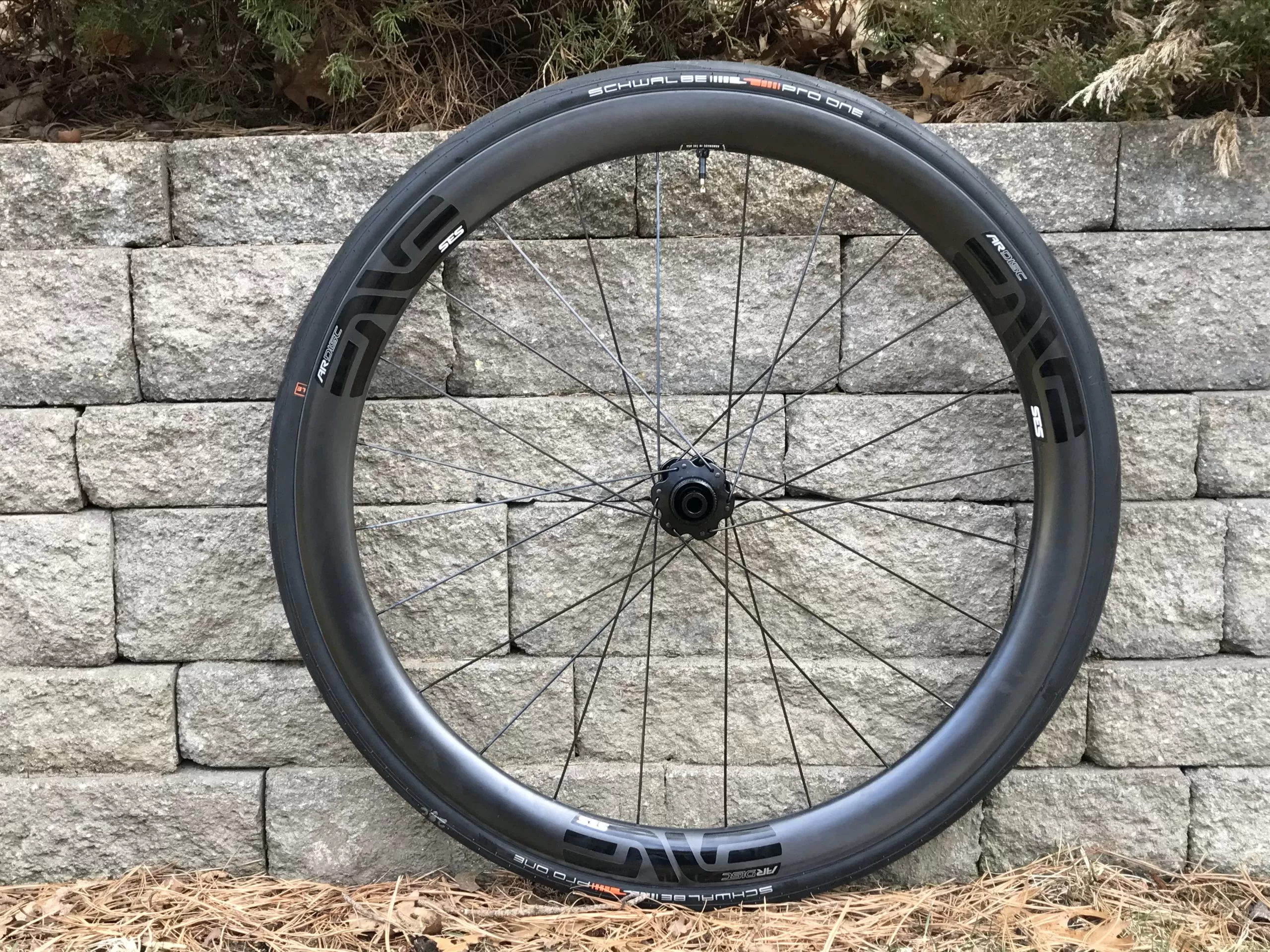
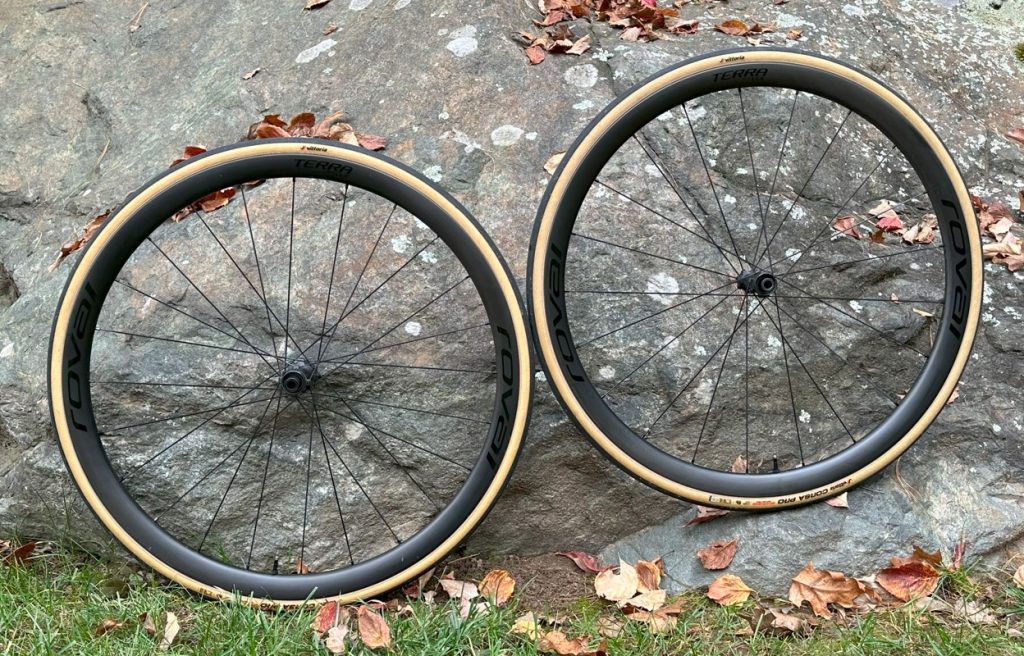
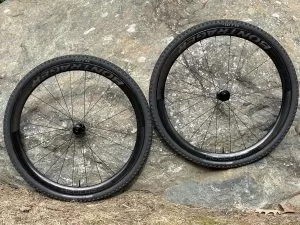

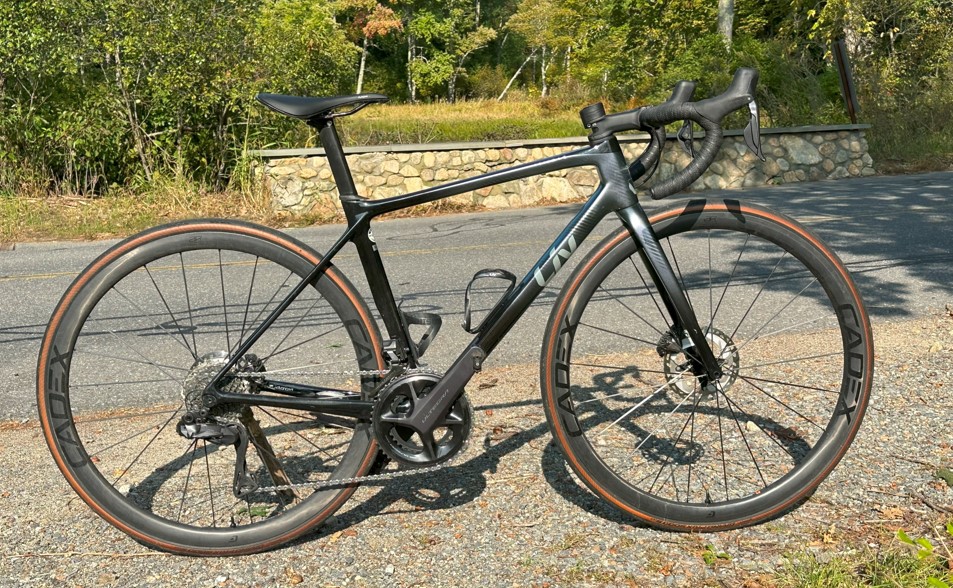
I’ve had that same thought. I purchased the hunt aero limitless 42 gravel wheels for gravel (obviously) initially. However I put 30c tires on it and occasionally ride it on pavement. It works pretty well, kind of a jack of all trades. Given their aero claims, I’d recommend you add them to your test to see if it matches reality.
Thank you for your thorough investigation on the best all road wheels… Maybe next time try to consider affordable ones as well… Most of them cost more than my bike itself 🙁
Pascal, as I did mention in the review, none of the value carbon wheels we’ve tested are good as both road and gravel wheels. However, buying one of these all road wheels will cost you about the same as buying two value carbon wheels, one for each surface and the performance will be better on both. Steve
How is the tire width affecting the better aero for the Enve 4.5 vs. Zipp 454? Meaning is this due to the wider tires for gravel fitting better to the wider Enve rim … or do you also have the experience that with 25mm tires that the Enves are better aerodynamically? Thanks!
Martin, Not sure I understand your question. I wouldn’t put 25mm tires on the ENVE and would only ride 25mm tires on the Zipp if I were on a pristine paved surface. For a thorough discussion of the topic, read my review How Wide Wheels and Wide Tires Can Make You Faster. Steve
What tires where you using here? I guess I was assuming something like 32 – 35mm, considering the topic is Allroad (I have no idea as I either ride 25mm on my road bike or 2.4″ on my MTB). In that case, I can see how the Enve’s would match the tire width better and give better aero performance. Sorry, I forgot the Enve’s are not intended for 25mm. Per you tire article referenced – I think the Zipps are optimized for 25mm and OK for 28mm. Therefore my question … if you were using gravel tires, did that size simply match the design of the Enve’s better than the Zipps? Or were you running ~28mm and therefore the Enve’s are simply better aerodynamically?
For dirt and loose gravel, yes 32 to 35mm is all you need. But no, with tires at that width relative to the rim width, aero performance is more likely a function of the rim depth since the air will reattach on deeper wheels and might not or stay attached as long on shallower ones.
FINALLY …… an article that speaks directly to me by describing what was my dilemma on wheel sets. My stable has multiple XC MTB and a gravel bike that also serves as a road bike. XC and gravel bikes are the perfect pairing for me.
I believe I have built the perfect ALLROAD wheelset that serves dual purpose for both road and gravel. I cannibalised Enve M50 rims from an older XC MTB and laced them with bladed spokes to DT Swiss 240 road hubs. Rim dimensions are 622x 21/27mm with 28mm depth. Tubeless setup.
As a mountain biker focused on endurance marathon events, 50% of all my cycling is on XC MTB with the balance on either gravel or road. I switch out tires when dedicating between gravel or road cycling.
With either 45mm gravel tires or 32mm road slicks their performance seems to be absolutely perfect on all surfaces.
– On gravel I do not worry about rim strength and their XC compliance is noticeable.
– On road the wheels are light and snappy and I do not lack any speed.
Roadies on their aero super bikes with 45-60 section rims descend only marginally faster than I do on my gravel/road bike (with 32mm slicks). However, because I don’t have extensive experience of pure road riding I have no comparisons to offer as to whether my wheels are optimal or not. My point is that older narrow carbon MTB rims do work really well for fast ALLROAD purposes.
Are there any handling tradeoffs for road use when going from 21mm to 25mm interior width wheels? My Factor Ostro was spec’d with 21mm Black Inc wheels, but I chose the 303 Firecrests instead, which are 25mm. I got more comfort and better crosswind resistance with the Zipps, but I’m unsure if the wider wheels would corner or turn any differently.
Robert, In theory, a rim with a bigger inside width allows you to put on a wider tire which together should give you better handling as there is a wider tire surface or “contact patch” on the road. In practice, it depends on a lot of variables – relative wheel stiffness, tire pressure, and tire choice for sure. For example, if the wheel with the wider rim isn’t as stiff or the pressure is too high, or the tire isn’t as supple compared to the wheel with the narrower inside rim width, the wheel with the bigger inside rim width might not handle as well. But, if you’re comparing two wheelsets, one with a wider inside rim width than the other, both which have sufficiently stiff rims and using the same tire, say a 28mm wide one at the right pressure given the rim width and your weight, then the wheels with the wider rims should handle better than the narrower ones. Your ability to tell the difference would depend on your bike handling ability, cornering speeds, etc.
The other benefit of a wheelset with a 23 or 25mm inside width is that you can run wider tires, e.g. 30 or 32mm ones to further improve your comfort especially on rougher roads or even wider 35mm+ gravel tires and get even better and certainly more noticeable comfort and handling differences over a wheelset with a 19mm or 21mm inside rim width. Steve
Thank you, Steve. I appreciate the thoughtful and detailed reply.
I don’t understand the inter-relation between bike geometry, tire size and shape and handling. But, I do have a small experience to share. On my original Canyon Endurace, I switched from the stock 25mm tires to 28mm – both Continental GP4000. I clearly noticed the change and did not like it … sold the 28’s after ~3-4 rides. The handling was slower at turn-in and tended to run wide. I did not foresee myself adapting. Plus the handling on the 25’s was probably the best on any road bike I’ve ever had. One additional note is that the traction with 28’s was less. What I experienced was that over small road cracks braking into downhill corners, the rear was prone to locking up. My theory is that the contact patch became shorter but wider and not able to bridge over cracks in the road as well.
Further in the direction of speculation … I feel that I prefer rounded tire shape and increasing the rim width for the same tire size will just make the tire flatter. My feeling it that as the bike is leaned over, there would be a changing shape contacting the ground.
Just my $0.02
Hi Steve,
Do you had the chance to try the Reserve 40/44? I’m looking at this wheel set but not much reviews of it?
Steve, I haven’t tested that wheelset. You can always use the search bar at the top of the site’s pages to see if I’ve tested a wheelset you’re interested in or look at the wheelset category reviews under the “Read the Reviews” tab to see how the wheelsets I’ve reviewed compare. Steve
Looking forward to your review of the ARD44 by Chris King! 🙂
Hello. You mentioned that the Enve 3.4 was the “most comfortable wheel you’ve ever ridden”
I’m assuming you are referring to vertical compliance?
So you would say it’s more comfortable even than much shallower wheels like the Roval Terra?
John, Yes. Vertical compliance enables comfort with the right tires and pressure. If I were to update the review, I’d probably say the ENVE SES 3.4 is “one” of the most comfortable I’ve ever ridden. As you can see in the comparative chart, there are others I rate the same on compliance, including the Roval Terra CLX II. I’d still favor the 3.4 for absolute comfort. but the Terra CLX II is in the same league. I don’t think the relative depths of the two make a difference I can tell. Steve